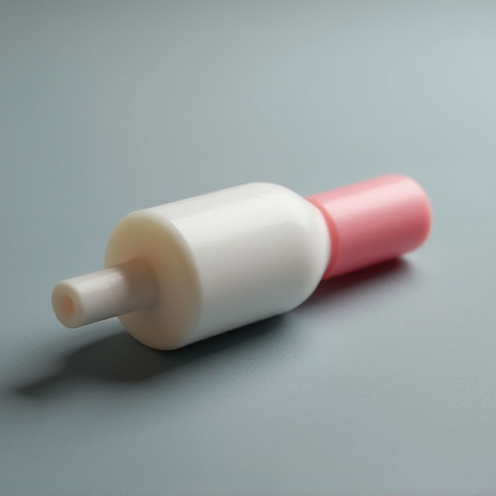PARACETANAL 170MG SUPPOSITORY
Product Info
| Prescription required | No |
| Marketer | Zydus Cadila |
| Active Ingredient | Paracetamol (170mg) |
| Salt Synonyms | Acetaminophen |
| Storage | Store below 30°C |
| Chemical Class | P-Aminophenol Derivative |
| Habit Forming | No |
| Therapeutic Class | PAIN ANALGESICS |
| Action Class | Analgesic & Antipyretic-PCM |
| User Rating | 4.8 |
| User Reviews | 774 |
FAQ














PARACETANAL 170MG SUPPOSITORY Reviews
PARACETANAL 170MG is for rectal use only and should never be taken by mouth. Encourage your child to empty the bowel before inserting the medicine as that will enhance the absorption of the medicine. Also, ask your child to slow down and avoid moving around a lot at least for an hour after placing the medicine. The dose will depend upon your child’s age, body weight, and severity of the infection, so stick to the dose, duration, and way prescribed by your child’s doctor. If your child passes stool within 30 minutes of inserting PARACETANAL 170MG, you will have to insert it again.
Do not give your child PARACETANAL 170MG along with other medicines (many cold and flu medicines and other painkillers) that contain paracetamol, as this may result in overdosing and cause dangerous side effects such as hepatotoxicity (liver damage). Always check the ingredients of any other medicine before giving them to your child in combination with this medicine. Also, do not stop giving the medicine abruptly even if your child starts to feel better. Doing so may bring back the symptoms or worsen the condition.
Generally, this medicine is well-tolerated by the children. However, temporary side effects such as anal irritation, nausea, vomiting, and constipation may occur in some children. Consult your doctor in case these episodes become bothersome for your child.
This medicine is often considered safe and effective but may not be suitable for everybody. Inform your doctor if your child is undergoing treatment for any blood-related disorder, is allergic to any medicinal compound, or has any birth defects, liver impairment, or kidney dysfunction. This will help your child’s doctor evaluate the dose and suitability of this medicine in a better way.
How PARACETANAL 170MG SUPPOSITORY Works
How to Use PARACETANAL 170MG SUPPOSITORY
Benefits of PARACETANAL 170MG SUPPOSITORY
- In Pain relief: PARACETANAL 170MG is a common painkiller used to treat aches and pains. It works by blocking chemical messengers in the brain that tell us we have pain. It is effective in relieving pain caused by headache, migraine, nerve pain, toothache, sore throat, period (menstrual) pains, arthritis, and muscle aches. This medicine is very widely used and very rarely causes side effects if taken at the right dosage. Take it as it is prescribed to get the most benefit. Do not take more or for longer than needed as that can be dangerous. In general, you should take the lowest dose that works, for the shortest possible time. It is also the first choice of painkiller during pregnancy or breastfeeding.
- In Treatment of Fever: PARACETANAL 170MG is also used to reduce a high temperature (fever). It works by blocking the release of certain chemical messengers that cause fever. It may be prescribed alone or in combination with another medicine. You should take it regularly as advised by your doctor.
Uses of PARACETANAL 170MG SUPPOSITORY
- Treatment of Fever
- Pain relief
PARACETANAL 170MG SUPPOSITORY Side Effects

Safety Tips
Quick Tips
- Inform the doctor if your child has liver disease as the dose may need to be adjusted.
- PARACETANAL 170MG is for use in children who find it difficult to take paracetamol as tablets or syrup.
- This medicine is for rectal use only and should not be taken by mouth.
- If PARACETANAL 170MG does not seem to be helping your child, contact your doctor for advice. Do not give extra doses.
- Never give any other medicine formulation containing paracetamol along with this medicine as that may lead to serious side effects.
References
- Grosser T, Smyth E, FitzGerald GA. Anti-Inflammatory, Antipyretic, and Analgesic Agents; Pharmacotherapy of Gout. In: Brunton LL, Chabner BA, Knollmann BC, editors. Goodman & Gilman’s: The Pharmacological Basis of Therapeutics. 12th ed. New York, New York: McGraw-Hill Medical; 2011. pp. 982-84.
- Furst DE, Ulrich RW, Varkey-Altamirano C. Nonsteroidal Anti-Inflammatory Drugs, Disease Modifying Antirheumatic Drugs, Nonopioids Analgesics, & Drugs Used in Gout. In: Katzung BG, Masters SB, Trevor AJ, editors. Basic and Clinical Pharmacology. 11th ed. New Delhi, India: Tata McGraw Hill Education Private Limited; 2009. pp. 635-36.
- Paracetamol [EMC Patient Leaflet]. Leeds, UK: Rosemont Pharmaceuticals Limited; 2019.
- Aabideen K, Moulton LS, Sills J. Accidental staggered paracetamol overdose: An interesting case report. J Pharmacol Pharmacother. 2011;2(3):189-190.
- Grosser T, Smyth E, FitzGerald G. Pharmacotherapy of Inflammation, Fever, Pain, and Gout. In: Brunton LL, Hilal-Dandan R, Knollmann BC (Editors). Goodman & Gilman's: The Pharmacological Basis of Therapeutics. 13th ed. New York, New York: McGraw-Hill Medical; 2018.
- MedlinePlus. Acetaminophen.
- Royal College of Paediatrics and Child Health. Medicines for Children - information for parents and carers.
- Paracetamol [Package Leaflet]. Norfolk, UK: Amdeepcha Limited; 2022.
- Section on Clinical Pharmacology and Therapeutics; Committee on Drugs, Sullivan JE, Farrar HC. Fever and antipyretic use in children. Pediatrics. 2011;127(3):580-7.
- Children’s Health Queensland Hospital and Health Service. Emergency care of children: Medication guides for use in Queensland.
- Offringa M, Newton R, Cozijnsen MA, et al. Prophylactic drug management for febrile seizures in children. Cochrane Database Syst Rev. 2017;2(2):CD003031.
